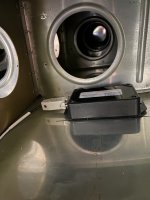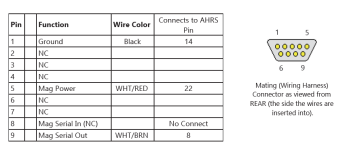gmcjetpilot
Well Known Member
GRT has good instructions and recommends Magnetometer mounted in wing tip, no further aft of spar than one lightning hole (steel aileron counterweight). OK.
Q) Wing Wiring, running NAV, Strobe, Recognition/Landing Light wires with Magnetometer wires from wingtip to fuselage?
Whelen LED Nav/Strobe Microburst Cometflash, FlyLED Single Spotlight. I want to run all wires coming from wingtip (lights and magnetometer) in one conduit behind rear spar.
Q) GRT provides unshielded three twisted wire with Magnetometer. I am thinking of upgrading to shielded bundle for the Magnetometer (or Lights or both). Comments?
Q) Any preference in Left or Right Wing for Magnetometer? Preference Left or Right wing for Autopilot Servo?
Q) Wing Wiring, running NAV, Strobe, Recognition/Landing Light wires with Magnetometer wires from wingtip to fuselage?
Whelen LED Nav/Strobe Microburst Cometflash, FlyLED Single Spotlight. I want to run all wires coming from wingtip (lights and magnetometer) in one conduit behind rear spar.
Q) GRT provides unshielded three twisted wire with Magnetometer. I am thinking of upgrading to shielded bundle for the Magnetometer (or Lights or both). Comments?
Q) Any preference in Left or Right Wing for Magnetometer? Preference Left or Right wing for Autopilot Servo?







